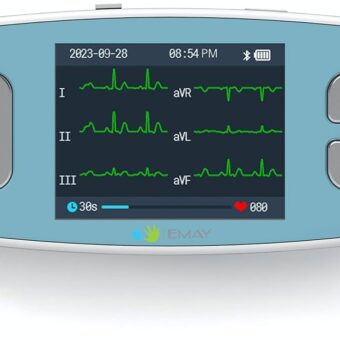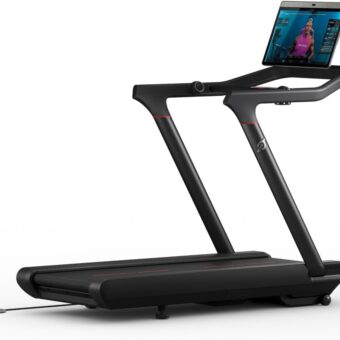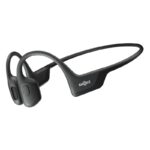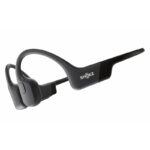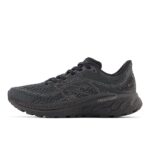How to Prepare for a 5K
Understanding the 5K Distance and Goals
The 5K, or 3.1 miles, is one of the most popular race distances worldwide, attracting novice runners and seasoned athletes alike. Whether you’re aiming to complete your first run or looking for personal bests, understanding what it takes to prepare can help you reach your goals.
**Setting Your Goals**
Before embarking on your training journey, it’s essential to define what you want to achieve with this race:
1. **Completion Goal**: If you’re new to running, your primary goal may simply be finishing the race without stopping. This mindset promotes a positive experience and encourages long-term fitness habits.
2. **Time Goal**: More experienced runners often aim for specific completion times—whether it’s breaking an hour or challenging themselves against previous finishes.
3. **Personal Challenge**: Some individuals use races as opportunities for personal growth by pushing past perceived limits—running faster than they thought possible or tackling longer distances in future events.
4. **Fun and Community Engagement**: Participating in local community runs can provide an enjoyable atmosphere filled with camaraderie that builds motivation through collective efforts.
By setting clear objectives tailored to individual aspirations—from merely completing the event successfully all the way up until classified speed—it lays down a purposeful foundation guiding every step of preparation!
Assessing Your Starting Point
Before diving into training plans, take time assessing where you’re beginning:
**Current Fitness Level**: Consider how regularly you’ve been exercising lately; if walking briskly feels easy already join together shorter jogging intervals might present adequate starting points versus jumping directly into extensive distance runs!
**Health Considerations:** Consult any healthcare professionals if uncertain about embarking upon physical activity considering existing conditions (like asthma or joint issues)—ensuring safety while reducing potential risks during workouts/training sessions ahead of far-off goals aligns well with sensible progression methods!
Building a Training Plan
With defined goals & realistic understandings established from assessment practices outlined earlier let’s discuss constructing effective routine schedules leading closer toward success! Below thoughtful tips/resources lead development toward potentially tracking structured methodologies customized uniquely oneself applicable right away regardless onto someone having only minimal experience engaging them previously at various levels regarding pacing beyond usual:
1) Choose a Program That Fits You
– Look into beginner-friendly programs such as Couch-to-5K (C25K) which helps novices gradually increase their endurance over several weeks.
– Experienced runners might prefer interval-based approaches ,that incorporate more intense workouts to enhance speed and stamina.
2) Set SMART Goals – Specific, Measurable, Achievable, Relevant, and Time-bound goals can help provide clarity and direction. For instance, instead of saying “I want to run more,” aim for “I will run three times a week for 30 minutes each session.”
3) Create a Weekly Schedule – Dedicate specific days and times for your workouts in advance. This not only establishes accountability but also helps build a consistent habit over time.
4) Build Rest Days into Your Plan – Recovery is crucial to avoid burnout or injury. Allocate at least one or two rest days per week where you can engage in light activities like stretching or yoga.
5) Track Your Progress – Keeping logs of your runs including distance covered, duration taken, and how you felt during the process helps identify patterns that work best for you as well as areas needing improvement.
6) Incorporate Cross-Training – Engaging in other forms of exercise such as cycling, swimming, or strength training on non-running days boosts overall fitness while minimizing the risk of overuse injuries.
7) Find a Community or Buddy System – Whether joining running clubs online or enlisting friends who share similar goals provides encouragement and motivation when challenges arise.
8) Stay Flexible – Be open to adjusting schedules based on life demands; it is okay if things don’t always go exactly according to plan. Adaptability ensures persistence without frustration!
9) Celebrate Small Wins – Acknowledge progress made along the journey! Treat yourself after completing milestones no matter how small they may seem (such as finishing an entire month following your schedule).
10 ) Keep Learning—Educational resources abound: books about running techniques/nutrition tips/articles/blogs by seasoned athletes contribute valuable insights that deepen knowledge continually enhancing personal training strategies!
Using these guidelines consistently aids constructing effective routines paving pathways toward success!
Essential Gear for Beginner Runners
When starting your running journey, having the right gear can make a world of difference in both performance and comfort. Here’s a list of essential items every beginner runner should consider:
1) Running Shoes
Invest in a good pair of running shoes that fit well and provide adequate support. Visiting a specialty running store for an analysis can help identify the best shoe type based on your foot shape and running style.
2) Moisture-Wicking Clothing
Choose breathable, moisture-wicking fabrics instead of cotton to keep you dry and comfortable. Look for performance t-shirts, shorts or leggings made from materials designed to wick sweat away from the body.
3) Comfortable Socks
Don’t overlook socks! Opt for those specifically designed for running with cushioning and moisture management features to prevent blisters—these will help keep your feet happy during long runs.
4) Running Accessories
Depending on personal preference, accessories such as hats or visors (for sun protection), sunglasses (to shield against UV rays), and lightweight jackets (for wind or rain protection) may enhance your run experience.
5) Hydration Solutions
Staying hydrated is crucial while running; use handheld water bottles, hydration belts, or vests depending on distance to ensure easy access to fluids when needed.
6) Fitness Tracker/Watch
A GPS watch or fitness tracker can monitor distance, pace, heart rate, and other metrics—offering insights into performance progress over time which helps remain motivated throughout each session!
7) Safety Gear
– Reflective gear if you plan on running early morning/evening.
– Personal safety devices like mace/personal alarms especially when venturing out alone.
8) Foam Roller/Stretcher
Integrate recovery tools into routine such as foam rollers which help alleviate muscle soreness post-run enhancing mobility ensuring better results with continued training sessions ahead!
9) Earphones/Headphones
If music motivates you during workouts choose wireless options free from any hindrances allowing ultimate focus without being distracted by tangled cords!
10) Running Journal/App
Keeping track helps maintain accountability document improvements realize how far you’ve come building confidence along way so don’t forget write down not only achievements but also thoughts feelings experienced while training regularly too!
By equipping yourself properly with these essentials alongside dedication discipline persistence everyone has potential be great runners regardless where they start their voyages cheering milestones along paths definitely bringing joy endurance weather conditions challenge perseverance illuminate brighter futures awaiting ahead!
Creating a 15-Day Training Schedule
Creating a 15-Day Training Schedule is a perfect way to structure your running journey and track your progress effectively. Here’s how to set one up:
Week 1: Building Base
– **Day 1:** Easy Run – 20 minutes at conversational pace
– **Day 2:** Cross-training (cycling or swimming) for recovery
– **Day 3:** Tempo Run – Warm-up for 10 minutes, then run at a challenging pace for 15 minutes, followed by a cool-down of 5 minutes.
– **Day 4:** Rest day – Focus on stretching and hydration
– **Day 5:** Long Run – Aim for stable endurance with a distance of about an hour or more.
– **Day 6:** Strength training focusing on legs and core
– **Day 7:** Recovery Run – Light jog or brisk walk for around30 minutes
Week2: Increasing Intensity
– **Day8**: Interval Training – Alternate between sprinting (30 seconds) and walking/jogging (1 minute) x6 times.
– ** Day9**: Cross-training – Engage in low-impact activity like yoga or Pilates
– ** Day10**: Fartlek run – Mix speeds throughout the run, incorporating bursts of speed lasting anywhere from one minute to five near the end.
– *Example:* Total time =35 mins; play with pacing during it
– be attentive! This can enhance speed naturally without extended fatigue!
– Try some incline challenges too so they’re integrated well within overall effort!
-Everyone’s strides evolve daily; listen closely!
Day11 : Rest & Analyze hungry legs relaxed every stride toward imagined finish lines this will also surprise you encourage reflection.
Final Days:
Day12 : Time Trial Halfway Designate flat space county road give everything should feel engaging confident successful progression reassurance overcome mental hurdles )
Day14 * Revival Event Define Personal [Milestones Feel free customize make farewell tribute participants deserve recognition their strength ,just lighter have strengthen bonds fuel moving forward life balancing active habits continuing remain vested wellness goals
The magic lies not just show results clock ticking but healthier sounds happy! Celebrate victories no matter size whether inching fruition becoming part community grows greater dimensions beyond singular focus striving excellence makes each step worthwhile!
By following this structured schedule while keeping notes along your path reflecting true growth accomplished stay aware incredible possibilities lie ahead transforming present efforts aspirations shaping future successes together friend journeys await eagerly greet milestones along ways gathered encouragement found next steps towards
Incorporating Walking and Running Intervals
into your routine can further enhance the journey. Begin by setting specific goals for each session, mixing walking and running to build endurance while minimizing fatigue. Start with short intervals, perhaps alternating between 1 minute of running and 2 minutes of walking, gradually increasing the running time as you feel more confident.
Embrace variety in your surroundings—explore different parks or trails that provide a refreshing change of scenery and keep motivation high. Consider using technology such as fitness apps or smartwatches to track your progress; celebrate those small victories through graphical representations that show how far you’ve come.
Moreover, remember the importance of community support during this endeavor! Join local running groups or online forums where like-minded individuals share tips, encouragement, and accountability. This connection fosters camaraderie which can transform solitary workouts into enjoyable experiences filled with friendship.
As you explore these new avenues for growth on this journey toward healthiness and fulfillment, make sure to listen to your body—it knows what works best for you. Rest when needed but also push beyond perceived limits once appropriately warmed up; every effort contributes significantly to overall well-being.
Lastly, never forget why embarked upon this path: it’s not merely about losing weight or fitting into old clothes but discovering joy within movement itself—feeling empowered by achievements along the way! Continue nurturing that enthusiasm throughout all stages involved because success is indeed within reach if you persistently strive forward together!
Importance of Proper Warm-Up and Cool Down
The importance of proper warm-up and cool down cannot be overstated. A good warm-up prepares your body for the demands of exercise by increasing blood flow to muscles, enhancing flexibility, and reducing the risk of injury. Consider including dynamic stretches or light aerobic activities that mimic your workout to elevate your heart rate gradually.
Cool downs, on the other hand, are equally critical as they help facilitate recovery by allowing your heart rate to return to normal levels and reduce muscle soreness. Incorporating static stretches post-exercise can aid in lengthening muscles and improving overall flexibility while promoting relaxation.
Both practices play an essential role in maintaining a balanced fitness regimen. They assist not just in physical performance but also help in mentally transitioning into or out from a state of exertion. By making these rituals integral parts of every workout session, you encourage longevity in your fitness journey—reducing wear on your body while setting yourself up for sustained growth.
Additionally, pay attention to any signals from our bodies during both warm-ups and cool-downs; listen closely since they often communicate what needs special focus or care. Hydration is also paramount before, during, and after exercises—ensuring optimal functionality as well as aiding recovery processes effectively between workouts.
Celebrate every milestone along this journey! Remember whether it’s accomplishing an extra rep at the gym or enjoying a leisurely walk outside; progress takes many forms worth acknowledging at each stage. Surround yourself with supportive colleagues who inspire motivation if possible—an uplifting community fuels persistence furthering all individual success stories written together!
As you make strides towards personal goals remember: It’s okay to have setbacks—the key lies within recognizing them purely as part of life’s rhythm rather than roadblocks holding you back permanently! Use challenges encountered merely as learning opportunities guiding future endeavors anew until momentum carries onward relentlessly toward ultimate aspirations fulfilled judiciously!.
Nutrition Tips for Optimal Performance
Is essential for maintaining energy levels and supporting your overall well-being. Here are some key strategies to consider:
1. **Balanced Meals**: Focus on creating meals that include a mix of macronutrients—carbohydrates, proteins, and healthy fats. Carbohydrates provide the necessary fuel, proteins assist in muscle repair and growth, while healthy fats support cognitive function.
2. **Stay Hydrated**: Water is crucial for optimal performance. Aim to drink enough fluids throughout the day, especially before, during, and after workouts or intense sessions.
3. **Mindful Snacking**: Choose snacks that offer nutritional benefits such as fruits, nuts, yogurt, or vegetable sticks with hummus instead of sugary treats that can lead to energy crashes.
4. **Meal Timing**: Plan your meals in accordance with important activities or training sessions. Eating a balanced meal at least 2-3 hours prior will help you perform better and sustain energy levels.
5. **Quality Sleep**: Nutrition doesn’t just involve what you eat – sleep plays an integral role too! Aiming for 7-9 hours of quality sleep each night will enhance recovery processes related to nutrition intake and physical exertion.
6. **Supplements Wisely**: While it’s best to get nutrients from whole foods whenever possible; sometimes supplements can help fill gaps if diet alone isn’t sufficient—consider vitamin D or omega-3s but consult with a healthcare provider first!
Staying Motivated Throughout Your Journey
is crucial for long-term success. Here are some strategies to help maintain your motivation:
1. **Set Clear Goals**: Establish specific, measurable, attainable, relevant, and time-bound (SMART) goals that give you a clear direction and purpose. Break these down into smaller milestones to celebrate progress along the way.
2. **Create a Routine**: Develop a consistent schedule that incorporates healthy eating and regular physical activity. Routines help form habits which can keep you motivated even on days when enthusiasm wanes.
3. **Track Your Progress**: Keeping a journal or using apps to log your food intake and workouts can provide valuable insights into what works best for you while reinforcing accountability.
4. **Find a Support System**: Surround yourself with individuals who share similar health goals or interests. Engaging in group activities not only makes the journey more enjoyable but provides encouragement during challenging times.
5. **Stay Educated**: Continuously seek knowledge about nutrition, fitness, and mental wellness through books, podcasts, workshops, or reputable online resources to stay inspired and informed about best practices.
6. **Celebrate Small Wins**: Acknowledging our achievements—no matter how small—can boost morale significantly! Whether it’s sticking to your meal plan for a week or increasing workout intensity gradually; reward yourself!
7. **Visualize Success**: Take time each day to visualize achieving your goals mentally picturing the end result—a healthier version of yourself—and the feelings associated with reaching those targets will serve as powerful motivators every step along this path!
8. **Embrace Setbacks as Learning Experiences**: Instead of getting discouraged after encountering obstacles such as cravings or missed workouts remind yourself that setbacks are opportunities in disguise allowing space for growth in resilience over time!
By integrating self-awareness with conscious choices driven by passion towards aligning actions with values personal growth unfolds naturally leading us ever closer toward ultimate fulfillment on individual journeys today & beyond! Remember patience is key – results may take time but together we rise stronger than ever before!
Listening to Your Body: Avoiding Injuries
and ensuring long-term sustainability in your fitness journey requires a deep connection with how your body feels. Pay close attention to any signs of discomfort or pain, as these can be indicators that you need to slow down, modify your routine, or seek professional advice. Engaging in regular self-assessments can empower you to understand when something isn’t right and enables proactive adjustments rather than reactive fixes.
Incorporating rest days into your regimen is equally essential; they provide crucial time for recovery and prevent burnout. Self-care practices like stretching, yoga, foam rolling, or gentle movement can enhance flexibility and promote relaxation—allowing both the mind and body to reset.
Setting realistic goals tailored to your unique capabilities while respecting where you’re currently at fosters a healthier relationship with exercise. Instead of striving for perfection each day, focus on small wins that build momentum over time which collectively lead to bigger achievements.
Mindfulness during workouts further enhances connection with physical sensations; being present allows you to appreciate every moment spent engaging in activities that elevate both mood and energy levels. Whether it’s savoring the endorphin rush after a run or relishing the strength found in lifting heavier weights gradually — celebrate those victories!
Finding Community Support: Surround yourself with individuals who uplift you along this path emphasizes accountability but also camaraderie! Seeking companionship from friends, joining local classes/groups (virtual or in-person), participating in challenges together fuels motivation while creating lasting bonds through shared endeavors.
Ultimately embrace this journey as more than just numbers on a scale—but an opportunity for holistic transformation encompassing mental clarity alongside physical prowess! And since our journeys differ widely remember it’s not about comparison but about progress at one’s own pace. Together let’s champion each other celebrating resilience as we reclaim health one step at a time today & well into the future!
Celebrating Your 5K Achievement
is about more than just crossing the finish line; it’s about recognizing all the hard work and dedication that got you there. Every early morning run, every moment of doubt pushed through, and each mile logged contributes to your unique story of perseverance.
As you bask in the accomplishment of completing your 5K, take a moment to reflect on how far you’ve come—not only in terms of fitness but also in personal growth. Maybe you’ve conquered self-doubt or built new friendships along the way. Each participant’s journey is valuable and deserves recognition.
Celebrate with those who have shared this experience with you—friends, family, teammates—because their support has played a crucial role as well. Whether it’s through sharing post-race meals or participating in community events that honor both participants and volunteers alike, embrace these moments fully.
Remember that this achievement can serve as a stepping stone toward future goals—it could inspire another race or even push you toward exploring different forms of physical activity. With newfound confidence under your belt (and new shoes perhaps), consider what lies ahead on your fitness path.
In hindsight, look at challenges not as barriers but as learning opportunities—to improve endurance mentally & physically while keeping joy within movement alive! Continue seeking balance by integrating rest days into your routine and fueling yourself properly for optimal performance.
As we wrap up this chapter together set upon celebrating our journeys rather than seeing them solely through numbers alone: Let every step forward remind us we are capable—and strong enough—to pursue endless possibilities! Here’s to many more miles traveled together—onward towards success defined by personal commitment over mere metrics!

